Kinesins Gene Family
SubCategories
Kinesins—Product Overview
The kinesin gene family is a group of motor proteins that play a critical role in intracellular transport, particularly in the movement of cellular cargo along microtubules. According to the HGNC database, 46 different kinesins have been identified in humans and other mammals. These proteins are grouped into 14 subfamilies. These proteins use ATP hydrolysis to propel themselves along microtubules in a unidirectional fashion, facilitating essential processes such as mitosis, cell division, and organelle positioning. Due to their involvement in critical cellular functions and their potential in various diseases, including neurodegenerative disorders and cancer, kinesins are being widely investigated for therapeutic applications. Creative BioMart offers a wide range of kinesins and related products to support research in cell trafficking, neurobiology and cancer therapy.
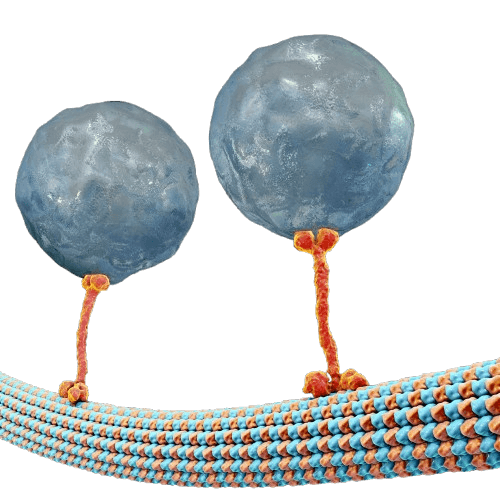
Jump to Section
Product Families
-
Kinesin-1 Family
-
Kinesin-2 Family
-
Kinesin-3 Family
-
Kinesin-4 Family
-
Kinesin-5 Family
-
Kinesin-6 Family
-
Kinesin-7 Family
-
Kinesin-8 Family
-
Kinesin-9 Family
-
Kinesin-10 Family
-
Kinesin-11 Family
-
Kinesin-12 Family
-
Kinesin-13 Family
-
Kinesin-14 Family
-
Kinesin-associated Protein 3
Background
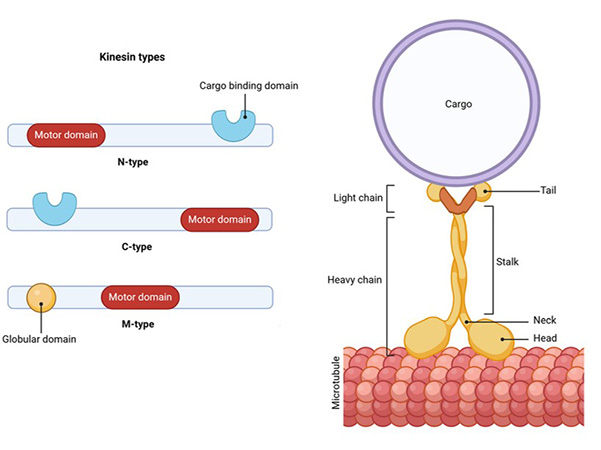
The kinesin gene family encodes motor proteins that move along microtubules powered by ATP hydrolysis. Structurally, kinesins typically consist of a microtubule-binding motor domain, a stalk region, and a cargo-binding tail. These proteins transport various cellular components, such as vesicles, organelles, and chromosomes, and play a critical role in intracellular trafficking. Their ability to convert chemical energy into mechanical work ensures proper cell function, making them essential for processes such as mitosis, neuronal transport, and intracellular signaling.
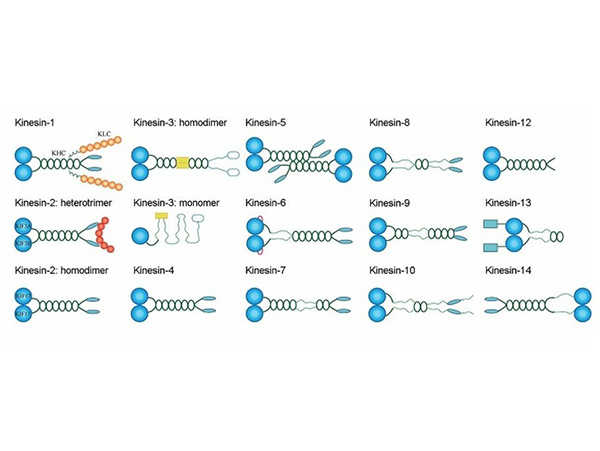
Kinesins are classified into several families based on sequence similarity and function. The major groups include conventional kinesin (KIF5), which transports organelles and vesicles, and mitotic kinesins, such as KIF11 (Eg5), which is critical for spindle assembly. Some kinesins move to the plus end of microtubules, while others, such as KIFC1, move to the minus end. This diversity allows kinesins to participate in a wide range of cellular processes, from organelle positioning to chromosome segregation during cell division.
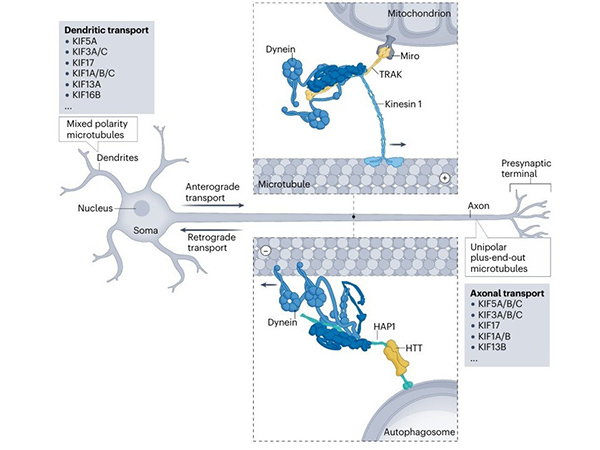
Kinesins are essential for maintaining cellular organization and function. In neurons, kinesins transport synaptic vesicles and essential proteins, ensuring proper signaling and neuronal health. During cell division, mitotic kinesins help assemble the spindle apparatus, enabling chromosome segregation. Dysfunction in kinesin-mediated transport has been implicated in several diseases, including neurodegenerative disorders such as Alzheimer's and Parkinson's, and cancer. Understanding kinesin function provides insight into cellular dynamics and offers potential therapeutic targets for disease intervention.
Applications
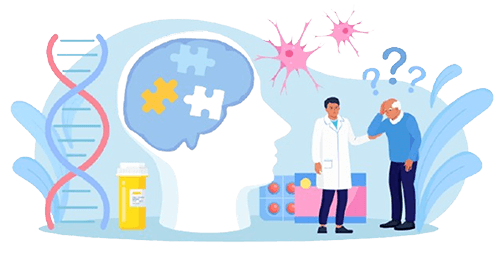
Intracellular Transport
Kinesins are essential for the transport of organelles, vesicles and protein complexes along microtubules in cells. Their motor activity drives the movement of cargo, supporting critical cellular functions such as signal transduction, nutrient delivery, and waste removal.
Cell Division and Mitosis
Kinesins are involved in the proper alignment and segregation of chromosomes during mitosis. Specific kinesins, such as KIF11, are critical for spindle assembly and cytokinesis, making them important targets for cancer therapies aimed at disrupting cell division.
Synaptic Function and Neurotransmission
In neurons, kinesins are involved in the transport of synaptic vesicles, ensuring efficient neurotransmission. Studying kinesin proteins helps us to understand how synaptic dysfunction leads to neurological disorders and provides potential avenues for therapeutic intervention in diseases such as epilepsy and schizophrenia.
Neurodegenerative Disease Research
Kinesins play an important role in axonal transport in neurons. Their dysfunction is associated with neurodegenerative diseases such as Alzheimer's and Parkinson's. Kinesin proteins are studied to understand disease mechanisms and to explore potential therapeutic targets for these disorders.
Cancer Therapeutics
Kinesins are overexpressed in many cancers and their inhibition can block tumor cell division. Targeting kinesins such as KIF2A can disrupt mitotic processes in cancer cells, making them a promising avenue for cancer treatment, including drug development and targeted therapies.
Drug Discovery and Screening
Kinesin proteins are used in high-throughput screening assays to identify small molecules that modulate their motor activity. This application aids in the development of novel drugs that can either enhance or inhibit kinesin function, providing therapeutic options for a variety of diseases.
Product Features
-
High Purity and Activity: Our kinesin proteins are purified to high standards to ensure minimal contaminants and maximum functionality. This ensures reliable results in experimental applications ranging from intracellular transport assays to drug screening.
-
Wide Selection: Our collection includes a wide range of kinesins from different subfamilies, including conventional kinesins (KIF5), mitotic kinesins (KIF11), and kinesins involved in intracellular trafficking. Each product is designed to support studies in a variety of biological pathways and cellular processes.
-
Recombinant Expression Systems: Kinesins are expressed in optimized recombinant systems such as E. coli or mammalian cells, ensuring high yield and activity. Our proteins are available in a variety of formats, including full-length and truncated versions, tailored to specific research needs.
-
Functional Assays Support: We offer kinesins that are functional in assays that measure motor activity, microtubule binding, and ATP hydrolysis. These proteins are ideal for studying the mechanisms of intracellular transport, mitosis, and other cellular processes.
-
Research-Grade for Biomedical Studies: All of our kinesin proteins are rigorously tested for quality and activity, making them suitable for high-impact research in neuroscience, oncology, and cell biology. They support studies of motor protein dysfunction, neurodegenerative diseases, and cancer therapy development.
-
Custom Solutions Available: In addition to standard kinesin products, we offer custom kinesin protein production tailored to your specific research needs. This includes modifications for specific tagging, expression optimization, or activity testing.
Case Study
Case 1: KIF5 Stability in Alzheimer’s
Chen et al., 2021. Normal levels of KIF5 but reduced KLC1 levels in both Alzheimer disease and Alzheimer disease in Down syndrome: evidence suggesting defects in anterograde transport.
Impaired axonal transport may play a role in neurodegenerative diseases such as Alzheimer's disease (AD) and Down syndrome (DS). Kinesin family member 5 (KIF5) and its regulator, kinesin light chain 1 (KLC1), are key proteins involved in anterograde axonal transport. While previous studies have reported conflicting changes in these proteins in AD, this study aimed to clarify their levels in AD and AD-DS brains. In this study, no significant changes in KIF5 levels were observed in AD or AD-DS samples. However, a strong correlation was found between KIF5 family members, suggesting co-regulated expression.
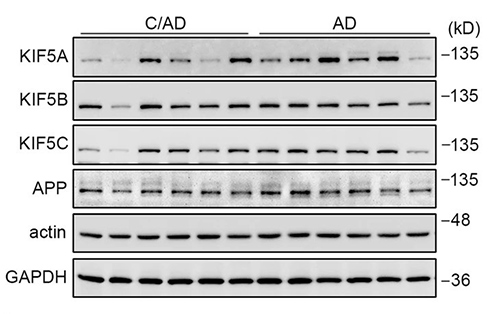
Figure 1. Neither the levels of KIF5 family members nor APP were changed in the frontal cortex of AD brain.
Case 2: KIF11 Dependency in SCLC
Sakuma et al., 2024. Small cell lung carcinoma cells depend on KIF11 for survival.
Small cell lung carcinoma (SCLC) has limited effective treatment options and requires novel therapeutic strategies. This study investigates kinesin family member 11 (KIF11) as a potential target in SCLC. Analysis of publicly available datasets revealed significantly higher KIF11 mRNA levels in SCLC tissues compared to normal lung tissues. KIF11 expression strongly correlated with MKI67, a proliferation marker. Targeting KIF11 using RNA interference or the small molecule inhibitor SB743921 in SCLC cell lines (Lu-135 and NCI-H69) resulted in G2/M phase cell cycle arrest and complete growth suppression. Combining KIF11 inhibition with suppression of BCL2L1, an anti-apoptotic protein, significantly reduced cell viability, suggesting a synergistic effect.
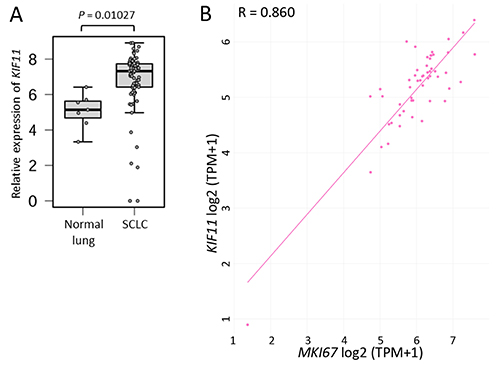
Figure 2. Small cell lung carcinoma (SCLC) tissues have higher KIF11 mRNA expression levels than normal lung tissues. (A) KIF11 mRNA expression patterns in normal lung and SCLC tissues. Expression data from 7 normal lung and 79 SCLC tissues were obtained from a previous report. (B) Correlation between KIF11 and MKI67 mRNA expression levels in 53 SCLC cell lines using data from the Cancer Dependency Map.
FAQs
-
Q: Are your kinesin proteins functional in in vitro assays?
A: Yes, our kinesins are rigorously tested for functionality in key assays, including microtubule binding, ATP hydrolysis, and motor activity assays. They are designed to accurately mimic their natural biological functions, providing reliable results for studies of intracellular transport and cellular processes. -
Q: What is the purity of your kinesin proteins?
A: Our kinesin proteins are purified to high standards, typically greater than 95% purity, to ensure minimal contamination and optimal activity. Each protein is verified by SDS-PAGE and other quality control measures to ensure the highest quality.
-
Q: Do you offer custom kinesin proteins?
A: Yes, we offer custom kinesin proteins tailored to your specific research needs. This includes modifications for custom tags, expression optimization, or activity testing. Please contact our team for more information on customization options.
-
Q: Can I use kinesin proteins in live cell imaging studies?
A: Yes, our kinesin proteins are suitable for live cell imaging applications, especially when labelled with fluorescent markers or used in functional assays involving microtubule dynamics or intracellular trafficking. Detailed protocols are available for optimized experimental setups. -
Q: What are the research applications of kinesin proteins?
A: Kinesins play a critical role in cellular processes such as intracellular transport, mitosis, neurodegenerative diseases, and cancer research. Our kinesin products are widely used to study motor protein mechanisms, therapeutic drug development, and cellular biology. -
Q: What types of kinesins are available in your catalog?
A: We offer a wide range of kinesins, including conventional kinesins (e.g., KIF5), mitotic kinesins (e.g., KIF11), and those involved in specialized cellular functions, such as intracellular trafficking and axon transport. Please check our catalog or contact us for specific product availability. -
Q: Do you provide kinesins for animal model studies?
A: Yes, our kinesins are suitable for use in animal model studies, including those focused on neurodegenerative diseases, motor dysfunction, and oncology research. We recommend that you select the appropriate kinesin based on your model requirements and experimental goals.
















